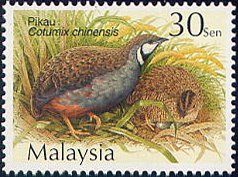The purpose of this study was to evaluate the impact of malathion on the immune system of wild birds, using Japanese quail (Coturnix coturnix japonica) as a model. Quail were exposed to malathion in drinking water at environmentally realistic concentrations (0 ppm, 1 ppm, and 10 ppm). In the fifth week, several arms of the immune response were tested using the T-cell based phytohemagglutinin (PHA) skin test, the B-cell mediated antibody response, and the chemiluminescence assay measuring innate immunity. After the sixth week of malathion exposure, quail were challenged with E. coli O2. The bursa of Fabricius and the spleen were assessed for histopathology.
No clinical signs of malathion toxicity were observed. Morbidity or mortality subsequent to E. coli exposure tended (P = 0.08) to be higher in the high exposure group (50.0%) compared to the control (22.2%) group. There was no difference in the innate immune response in the malathion exposed birds, however, humoral immunity was suppressed (P = 0.03) with the higher malathion exposure. Histopathological evaluation revealed an immunosuppressive effect of malathion on the bursa of Fabricius; bursal atrophy, decreased B-cell density and increased apoptosis in the medulla, and increased connective tissue thickness of the follicular epithelium. Antibody suppression was correlated with bursal changes and peripheral blood lymphocyte count, the organ and cells involved in antibody production. Following the same pattern as other immunotoxicity tests, the PHA T-cell proliferative response also tended to be suppressed in the high exposure group. This study provides evidence that subchronic, moderate malathion exposure is immunotoxic to quail and that testing integrated, functional immunity using an infectious challenge is a better predictor of immunotoxicity than individual responses to immunotoxicity tests. The secondary antibody response, circulating lymphocyte populations, and bursal histopathology were the most sensitive indicators of immune status, as these predicted decreased disease resistance with malathion exposure.
Source:
S. Nain, A. Bour, C. Chalmers and J. E. G. Smits (2011) Immunotoxicity and disease resistance in Japanese quail (Corturnix coturnix japonica) exposed to malathion. Ecotoxicology Volume 20, Number 4, 892-900, DOI: 10.1007/s10646-011-0657-6
http://www.springerlink.com/content/g22501r01657n40w/

- Login om te reageren
